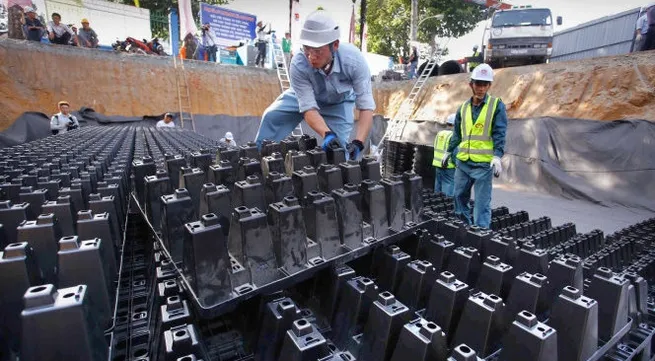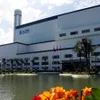Ho Chi Minh City to build 6 underground reservoirs to control floods

The six reservoirs will have a total capacity of 40,000 cubic metres and cost VND475 billion (US$20.4 million).
The largest reservoir will be located under Lang Hoa Park in Go Vap district and will have a capacity of 20,000 cubic metres, while the second largest, at 10,000 cubic metres, is to be built at Hoang Van Thu Park in Tan Binh district.
The other locations for the reservoirs are the park at the Tran Thien Chanh residential neighbourhood in District 10, Phan Xich Long Street in Phu Nhuan district and Dien Bien Phu Street.
The reservoirs will be constructed from propylene cross-wave modules, which are highly durable, easy to install and environmentally friendly.
In August last year, an underground water reservoir with a capacity of 109 cubic metres was already built using the same technology by Japan’s Sekisui at Vo Van Ngan Street in Thu Duc district.
Planning experts estimate that water reservoirs could help Ho Chi Minh City to reduce its rain-triggered flooding level by 30%.
The city’s government has determined flood control as one of its key priorities as floods have become more and more severe in recent years.
Last month, heavy rains due to the remnants of Storm Usagi caused widespread flooding in the city, damaging thousands of cars and motorbikes.





